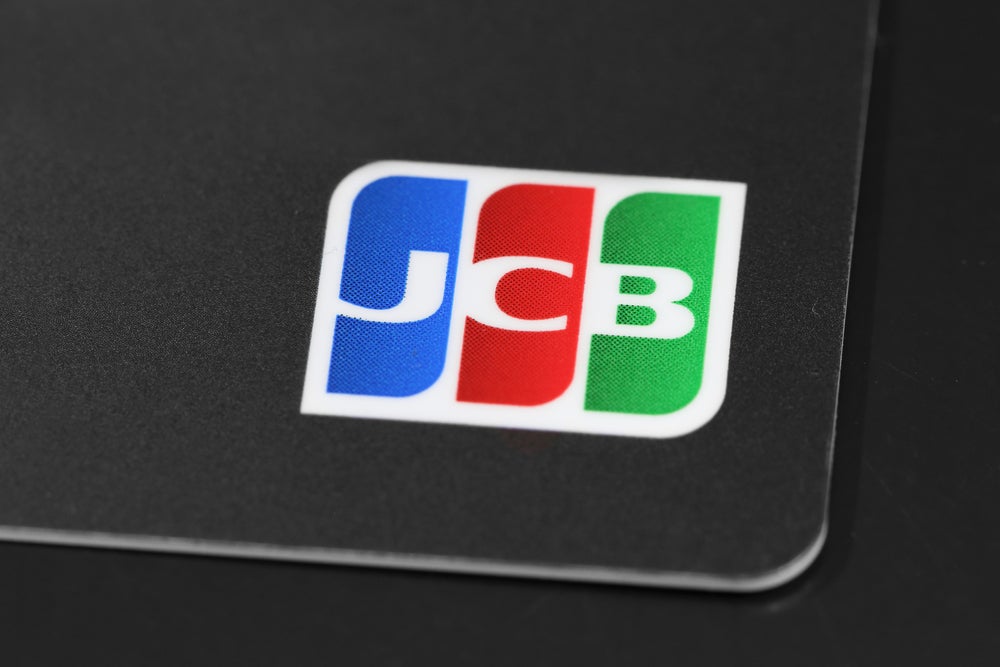exponential increases in individual voluntary arrangements and
bankruptcies and massive increases in write-offs, retail financial
institutions need to maximise collections effectiveness, says
Francesco Burelli and Anthony Louw, principal consultants
at Capco.
In the UK, 2005 saw the first contraction in more than a decade in
gross advances in the consumer credit market. In parallel with this
contraction, bankruptcies increased by 32 percent between 2004 and
2005, with individual voluntary arrangements (IVAs) – a formal debt
repayment agreement – growing at a staggering 89 percent over the
same period. With the first quarter of 2007 not showing any
decrease in IVAs or insolvencies and six interest rate hikes in the
past 12 months, it is clear that the problem of increasing bad debt
is here to stay.
Any company where the volume/value of arrears justify the effort
can make a fundamental improvement on their arrears books through
the application of collection strategies, and by maximising the use
of their technologies, actively monitoring and treating their
charged-off book and measuring, monitoring and motivating their
collectors.
Recent Capco analysis reveals that most large financial
institutions are somewhat below best practice in terms of key
indicators such as roll rates between cycles (ie, number and value
of accounts rolling into and out the various arrears cycles)
promises kept rates, value collected per hour and right party
contact percentages. The following are common shortfalls:
• no clear strategy for preventing accounts that are current
from becoming delinquent (pre-delinquency);
• once an account is in arrears, there is a lack of specific
strategies for individual customer segments; often companies are
utilising a ‘one size fits all’ approach;
How well do you really know your competitors?
Access the most comprehensive Company Profiles on the market, powered by GlobalData. Save hours of research. Gain competitive edge.

Thank you!
Your download email will arrive shortly
Not ready to buy yet? Download a free sample
We are confident about the unique quality of our Company Profiles. However, we want you to make the most beneficial decision for your business, so we offer a free sample that you can download by submitting the below form
By GlobalData• insufficient management information and incorrect
measures;
• failure to implement the right technology or, more often,
inability to maximise utilisation of the technology;
• post charge-off, ineffective monitoring and treatment of
recoveries; and
• lack of investment in upskilling collectors and monitoring,
measuring and motivating them effectively.
Pre-delinquency
The objective of a pre-delinquency strategy is to prevent customers
who are not in arrears from defaulting later. A good indicator of
an effective pre-delinquency strategy is that there is at minimum a
5 percent to 7 percent variance between any control groups and
those accounts to which the strategy is being applied.
The first part of such a strategy is the selection of accounts to
which the pre-delinquency strategy is to be applied. Typical
criteria for this selection include:
• probability of customers to default;
• customer’s current indebtedness;
• any historical arrears;
• size of the debt; and
• current behaviour on their accounts, for example for credit
cards an indicator could be how often and how close they are to
their credit limits, if their current spend includes groceries and
general household expenses, if they only make minimum payments,
etc.
The next step is the creation and continuous maintenance of
appropriate strategies and scripts to be applied when contacting
these customers. These strategies and scripts are often a direct
translation of the selection criteria; hence, poor selection
criteria implies an inability to have an effective script.
Collections strategies
A collections strategy needs to be all inclusive and address all
phases of arrears; too often within the industry exactly the same
approach is taken for all accounts per cycle of delinquency with no
consideration of an account’s risk, value and age of arrears.
The criteria to be applied in the definition of the relevant
strategies needs to be based upon the risk associated with the
customer, the value of the debt, the age of the arrears and if
applicable, the value of the underlying asset for secured loans. In
the early arrears stages, a company needs to specifically address
those accounts with ‘low value, low risk’ versus those with ‘high
value, high risk’, with a standard approach for all accounts that
fall in between. For ‘low value, low risk’ a company would want to
minimise collections effort as far as possible, reducing arrears
expenses, as these accounts will often self-cure. But for ‘high
value, high risk’ the ultimate potential expense (write-off of the
debt) will typically far exceed the additional cost of treating
these accounts separately with a far more aggressive and
comprehensive approach. Specific strategies also need to be created
for the handling of bankruptcies and IVAs.
The starting point for the development of the relevant strategies
will begin with a quantification of what defines high, medium and
low risk and value. Once the criteria have been agreed, per stage
of arrears, then the next step will be to define what strategy to
apply to each segment. The strategy developed, per segment and age
of arrears, must include:
• communication (when, type of, style and tone);
• treatments that may be applied by collectors (eg, freeze
limits, offer a discount for full settlements, allow for a re-age
of the debt, capitalise arrears, etc); and
• an outline of the call structures to be utilised, per
segment and age, by the collectors clearly showing which treatment
to apply to what situation.
Closely allied with the strategy will be the sourcing decisions in
terms of whether the cycles should be handled in-house, outsourced,
on-shored or off-shored. Typical industry practice is that early
stage collections are best handled in-house where close customer
intimacy is required and late stage collections are usually
outsourced to a professional agency that specialises in hard
collections.
Insufficient management information
Management information must be accurate, comprehensive, relevant
and above all actionable. As far as possible the production of
management information must be automated as not only is manual
production relatively expensive but manual actions are always prone
to error.
As a minimum any company should be actively monitoring and
actioning the following:
• number and value of accounts rolling into and out the
various arrears cycles, per segment – the roll rate;
• per cycle: cash collected (payments received) and value of
promises taken, versus value in arrears, percentage of promises
kept. For each concession type (eg, payment holidays, debt re-age,
etc), number and value of and the penetration of accounts in
arrears (ie, how many customers out of the total where actually
contacted and spoken to);
• the effectiveness of their arrears suppliers (if outsourced)
in terms of average cash collected per account, penetration of
accounts in arrears and ‘promises to pay’ obtained and kept, other
treatments applied (payment holidays, discounts on payments, etc)
and total value collected versus total value in arrears; and
• average cost per account, per cycle of delinquency.
Collections technology
Although most large companies have a reasonable set of
collection-related applications, often key enabling technologies
such as behavioural scoring and adaptive control systems are
missing. A key learning is if you have purchased it, use it to the
fullest extent, and from this, continually innovate and improve
your systems.
Where companies do have the right standard technologies, few
utilise the applications and infrastructure to their maximum
potential. Typical failings include:
• call order – no constant monitoring and variation of the
order (ie, mobile, home, work) of outbound telephone numbers as the
time of day and seasons change or in line with what experience
indicates;
• predictive diallers – few companies take full advantage of
the capabilities of the diallers they have purchased. Many utilise
the dialler for only making outbound calls and do not utilise its
messaging capability or its capability to blend in and outbound
calls;
• manual and duplicated management information – in many, if
not all, instances the applications provide the management
information that is required; however, the skills to configure the
data provision within the system are lacking and as a result
management information is manually provided; and
• automated reminders – the focus for many companies is to
generate the communication to prompt the customer to call them to
make arrangements or payments but seldom is the same technology
used to remind the customer that an arrangement they made is now
due.
Post charge-off
Post charge-off, many companies do not actively track nor apply
specific strategies to these accounts. Although an account is
charged-off it is usually feasible to recover funds and as such it
is critical that specific strategies be applied to these accounts
and that the funds recovered be actively tracked. One key enabler
to perform these functions is a post charge-off management system
that automates many functions companies perform manually. In the
absence of such a system or the necessary funds to purchase a
system, outsourced providers are a good alternative.
For companies that actively pursue recovery in charged-off
accounts, key strategies are:
• where the debt is small or it is evident that no funds will
ever be recovered immediately, move to write-off and apply no
further action; or, if at all possible, sell these accounts and
reduce dependency on long-term recoveries;
• if the loan is secured by an underlying asset then:
• confirm if the loan-to-value (LTV) is at present greater
than 100 percent; if so, and the asset will increase in value, then
take a long-term view and attempt to obtain even small payments
until the time is appropriate to move for repossession;
• where LTV represents a fair possibility to recover the
monies owing, ie, less than circa 90 percent to 100 percent,
litigate as soon as possible for repossession and actively track
the stages of litigation;
• only litigate where success is feasible or the security
allows.
Companies pursuing such strategies must:
• constantly monitor recoveries made and compare these to the
option to sell the debt, per segment of accounts;
• closely monitor cost-to-recover versus funds recovered and
implement cut-offs where the cost exceeds the loan amount;
• implement and constantly monitor different collection
strategies per account segments (with the segments defined based
upon value of loan, risk or LTV if applicable, among others);
and
• monitor third-party performance, where outsourced, and
always employ various segmentation strategies to distribute the
account types between agencies and determine which agency is most
successful with which segment.
Investing in collectors
Many of the experienced collectors were hired and trained prior to
2006. This implies that their training reflects kinder economic
conditions and the approaches learnt by them will affect the
outcomes they will achieve. Investment in defining new training and
skills appropriate to the changed environment will easily return
the investment in the collectors.
Closely allied with training and skills is how the collectors are
monitored, measured and rewarded. Too often collection centres,
with strong former call centre management, are measured on
traditional call centre metrics such as average handling time and
spin rates (percentage with which the list of account is penetrated
on a periodic basis) and significantly less so on payments taken,
arrangements made and kept ‘promise to pays’. Call centre metrics
must be balanced against primary collection metrics with the
weighting placed on collection measures.
Typical measures that must be monitored for each individual
collector, split between inbound and outbound calls, are:
• call quality (following the defined scripts, treating
customers fairly and with respect, etc);
• team metrics (fit with team, growing the skills of new
collectors, etc);
• cash collected (payments taken);
• promises taken, per paid hour;
• promises to pay made versus broken, on a monthly
basis;
• number of accounts handled, per hour/day;
• calls, per paid hour;
• other treatments/concessions applied (for example interest
rebates, fee refunds, payment holidays, etc); and
• talk time versus update time.
Allied with the correct metrics must be the incentives for the
collectors to perform; this needs to be at both an individual level
and at a team level. The incentives must be demonstrably tied with
clear measures against which individuals and teams can assess
themselves and the incentive must be commensurate with the value
generated for the company. The performances of the individuals and
teams must be visible to them on a daily basis so that they can
accurately gauge how they are progressing.
*Francesco Burelli is principal consultant at financial services
consultancy Capco







